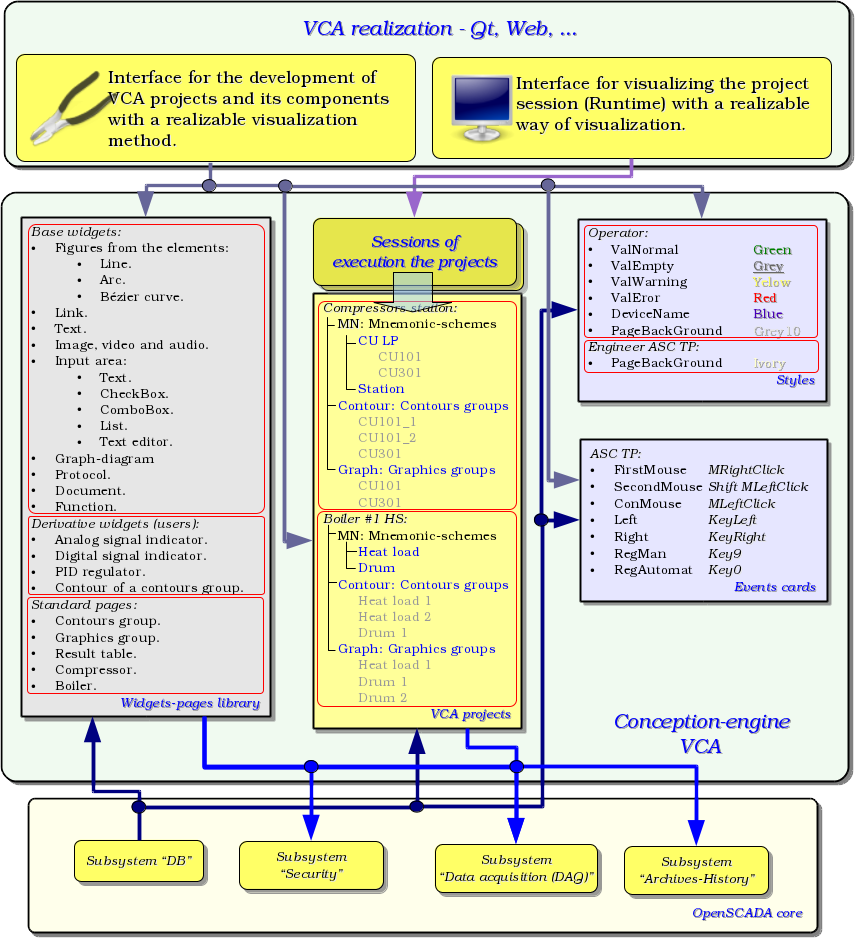Architecture
VCA, in whole, can operate in two modes — the development and running. In the mode of development, the interface of the VCA and its components is formed, the mechanisms of interaction are determined. In the execution mode, performes the formation of the UI interface and the interaction with the end user, based on the developed VCA.
VCA interface is formed of the frames, each of which, in its turn, formed from elements of the primitives, or user interface elements. Herewith, the user interface elements are also formed from the primitives or other user elements. That gives us a hierarchy and reuse of already developed components.
Frames and user elements are placed in the libraries of widgets. The projects of the interfaces of the final visualization of the VCA are formed from these libraries' elements. Based on these projects the visualization sessions are formed.
The described VCA structure is shown in the Figure.
That architecture of the VCA allows the support of three levels of complexity of the developing process of the control interface:
- Forming of the visualization and control (VC) interface using the library of template frames by placing the templates of the frames in the project and by the assignment of the dynamics.
- In addition to the first level, performing of the formation of own frames based on the library of derivatives and basic widgets. Perhaps as a direct appointment of the dynamics in the widget, and the subsequent appointment of it in the project.
- In addition to the second level, performing of the independently forming of derivatives widgets, new template frames and also the frames with the use of mechanism of describing the logic of interaction and handling of events in the user programming language of OpenSCADA.
